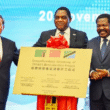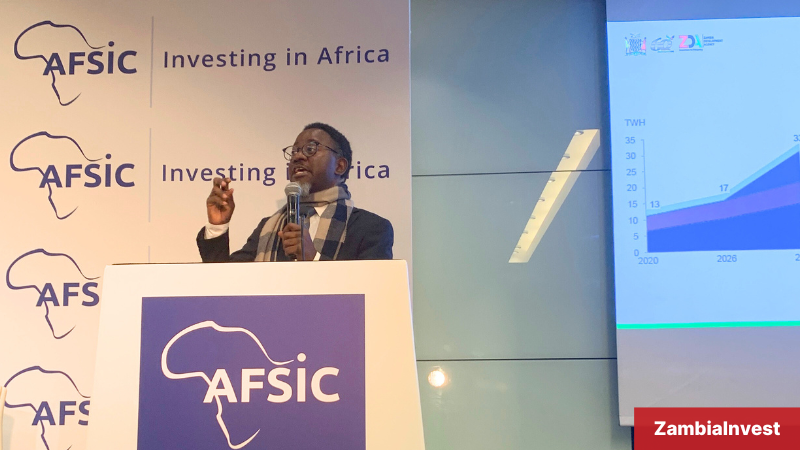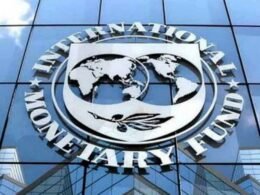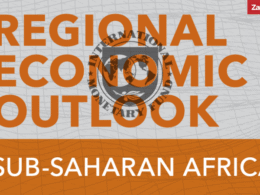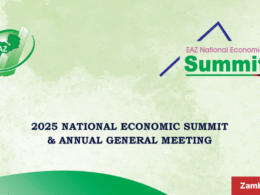The Zambia Development Agency (ZDA) showcased the main investment opportunities available in the country during the African Finance & Investment Forum (AFSIC) held in London on 4th October 2024.
AFSIC is a premier platform for African countries to present their investment landscapes to global investors, promoting collaboration and foreign direct investment (FDI) across the continent.
Chimuka Ketani, Director of Investments at ZDA, delivered a thorough presentation emphasizing Zambia’s rich natural resources, key sectors for investments, favorable investment climate, and political stability.
Key Sectors for Investment
The presentation identified several high-potential sectors, each supported by specific data and growth projections:
1. Agriculture
- Arable Land: Zambia boasts approximately 75 to 80 million hectares of land, with 42 million hectares designated as arable. Currently, only 7 million hectares are under cultivation, leaving 35 million hectares available for investment.
- Crop Production:
- Maize: Presently, Zambia produces about 3 million metric tons of maize annually. The government aims to double this output to 6 million metric tons, targeting 1 million hectares of cultivation.
- Soybeans: Production capacity stands at 850,000 metric tons, with plans to increase to 1.45 million metric tons by expanding to 1 million hectares.
- Water Resources: With 45% of Sub-Saharan Africa’s freshwater resources, including the vast Kariba Lake, Zambia offers excellent irrigation potential despite climate variability.
- Opportunities: Investment opportunities abound in farming, agro-processing, storage facilities, and the development of irrigation infrastructure to minimize post-harvest losses.
2. Energy
- Current Capacity: Zambia’s installed power capacity is 3.75 gigawatts (GW) under optimal conditions.
- Expansion Plans: The government plans to escalate this to 10 GW by 2030 to meet the rising demand from mining and agricultural sectors.
- Energy Sources:
- Hydropower: Dominates the energy mix, accounting for 85% of power generation.
- Renewables: Significant potential exists for solar, wind, and thermal energy investments.
- Market Potential: The energy sector is projected to generate sales revenue of approximately $775 million by 2030.
- Opportunities: There is a substantial demand for alternative energy projects, infrastructure development, and technological advancements in energy storage and distribution.
3. Mining and Minerals
- Copper Production: Zambia is Africa’s second-largest copper producer, generating around 1 million metric tons annually and ranking ninth globally.
- Emeralds: The country is the world’s largest producer of high-quality emeralds, renowned for their exceptional clarity and color.
- Critical Minerals:
- Cobalt, Manganese, and Nickel: These are crucial for the electric vehicle (EV) battery sector, with Zambia holding significant reserves.
- Value Addition: Only three companies currently process copper into copper wires domestically, presenting vast opportunities for investment in beneficiation and recycling.
- Opportunities: Investors can explore exploration, extraction, processing, and value addition in both traditional and critical minerals, particularly focusing on the burgeoning EV battery market.
4. Pharmaceuticals and Healthcare
- Current Landscape: Zambia has only six pharmaceutical companies serving a population of over 21 million, creating a substantial gap in drug production.
- Opportunities: Investment in pharmaceutical manufacturing, healthcare infrastructure, and distribution networks can significantly enhance healthcare accessibility and create lucrative business prospects.
5. Tourism
- Natural Attractions: Home to 20 national parks, 36 game management areas, and iconic sites like Victoria Falls and the Kasanka Migration.
- Wildlife Diversity: Over 1,800 animal species, including the world’s largest mammal migration.
- Infrastructure Needs: There is a pressing need for more accommodation facilities, including lodges, hotels, and conference centers.
- Opportunities: Investment in eco-tourism, hospitality services, and conference facilities can tap into Zambia’s rich tourism potential and support sustainable growth.
6. Infrastructure Development
- Lobito Corridor Project: A critical infrastructure initiative aimed at improving transportation links for exporting minerals.
- Project Details: Construction of a 580-kilometer rail line connecting the Copperbelt region to the port of Lobito in Angola.
- Investment Estimate: Approximately $1 billion required for the rail line and associated logistics centers.
- Existing Corridors: Multiple rail and road corridors, including the Blue Line to Tanzania and the Transamakan Corridor, facilitate robust connectivity.
- Opportunities: Investments in rail infrastructure, logistics hubs, and maintenance services are highly encouraged, supported by partnerships with international stakeholders like the US government and the EU.
Reasons and Advantages for Investing in Zambia
Chimuka Ketani outlined ten compelling reasons why Zambia stands out as an investment destination:
i. Connectivity: Excellent air and land connectivity through three international airports and multiple transport corridors, facilitating seamless trade and logistics.
ii. Strong Leadership: Under President Hakainde Hichilema’s private sector-driven governance, Zambia has implemented significant reforms enhancing the investment climate.
iii. Political Stability: Six decades of uninterrupted peace and stable governance since independence in 1964.
iv. Profit Repatriation: Investors can freely repatriate profits without restrictions.
v. Skilled Workforce: A well-educated and available labor force tailored to various industry needs.
vi. Favorable Tax Regime: Competitive tax policies and incentives designed to attract foreign investment.
vii. Robust Infrastructure: Growing infrastructure network supporting transport, energy, and communication needs.
viii. Low Production Costs: Competitive costs of production across sectors, enhancing profitability margins.
ix. Abundant Land: Extensive land availability with only a fraction currently utilized, particularly in agriculture.
x. Regional Market Access: Proximity to eight neighboring countries with a combined population exceeding 300 million, offering vast market potential.


